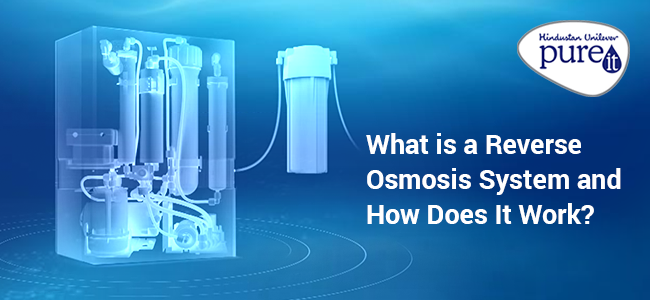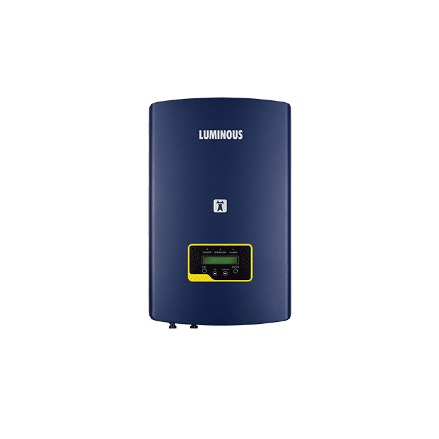You know how a pure and wonderful glass of water from someone’s home with a reverse osmosis system tastes if you’ve ever taken a sip from it.
If you want to ensure that your family is drinking safe water that is as free of toxins as possible, drinking water purified by reverse osmosis (RO) is the finest option for any home. It’s water the way it was meant to be consumed by humans.
But how do these systems function and what happens to the water in your home?
What is Reverse Osmosis?
Osmosis is the process of molecules passing across a semipermeable membrane from a less-concentrated solution to a more concentrated solution.
The roots of plants taking water from the earth is an example of osmosis in nature.
The process of reverse osmosis is the polar opposite of that.
To create a less concentrated solution, molecules are driven across a semipermeable barrier. The membrane, in essence, functions as a filter because it has extremely small pores that strain out minuscule pollutants from the water you drink.
The semi-permeable membrane in reverse osmosis drinking water systems only allows water molecules to pass through, while other impurities are collected and washed away.
How does Reverse Osmosis work?
RO works by increasing the pressure on the salt side of the membrane and forcing water through the semipermeable membrane. It leaves about 95 to 99% of dissolved salts in the reject stream. The salt concentration in the tap water determines the amount of pressure needed. The higher the feed water concentration, the more pressure is needed to overcome the osmotic pressure.
Desalinated water that has been demineralized or deionized is known as permeate water. The reject stream contains the concentrated water that did not pass through the membrane.
Water molecules flow through the semipermeable membrane as the feed water reaches the RO membrane under pressure. But salts and other pollutants are not allowed to pass and are ejected through the reject stream (also known as brine stream), which drains or, in certain cases, is sent back into the feed water supply to be recycled. Permeate or product water goes through the RO membrane which is generally devoid of dissolved salts.
It’s critical to recognize that a RO system uses cross filtration rather than typical filtration, which accumulates contaminants within the filter material. In cross filtration, the solution runs through two exits: filtered water goes one way, contaminated water goes the other. Cross-flow filtration removes pollutants by allowing water to whisk them away while also providing enough turbulence to keep the membrane surface clean.
Stages of RO Water Purifier Systems
The RO membrane is at the heart of a reverse osmosis system, although it also includes other types of filtration.
In addition to the membrane, every reverse osmosis water system includes a sediment filter and a carbon filter. The filters are classified as pre-filters or post-filters depending on whether water passes through them before or after the membrane.
One or more of the following filters are found in each system type:
- Sediment filter: Removes dust, debris, and rust particles
- Carbon filter: Removes VOCs, chlorine, and other impurities that give water a foul taste or odor
- Semi-permeable membrane: Removes up to 98 percent of total dissolved solids (TDS)
Why Choose Reverse Osmosis?
If you’re looking for a water filtration system that can provide you with excellent water, look no further. Here are some reasons to think about RO:
1. Improves Taste
By removing pollutants that cause taste and odor concerns, RO filtering enhances the taste, odor, and appearance of water.
2. Saves Money
You can cancel your water delivery service and stop buying cases of bottled water if you have a RO system. Reverse osmosis filtration helps in providing water-better-than-bottle.
3. Simple Maintenance
Because RO systems have few replacing elements, they are simple to clean and maintain.
4. Removes Impurities
Nitrates, lead pesticides, fluoride, bacteria, arsenic, and other contaminants can be removed from water using water purifier RO. The carbon filter will also help in removing chlorine and chloramines.
How does RO remove these impurities?
To remove pollutants from tap water, reverse osmosis by determining its size and charge. This is why the RO membrane rejects any particle with a molecular weight greater than 200 or an ionic charge greater than 1.
As an example of a real-world contaminant, consider sodium. The RO membrane will allow a single-charged sodium ion or a two-charged calcium ion to flow through. Gases like CO2 will always pass through the RO water system due to their lower molecular weight and greater ionic charges.
The filtered or permeate water will have a lower pH than normal because unfiltered CO2 is converted to carbonic acid since the membrane is unable to filter out gases.






